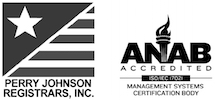Everything You Need to Know About KVM
KVM is an abbreviation for keyboard, video and mouse and is a device that allows a user to control multiple computers from one keyboard, video, mouse, or monitor. The number of CPUs or servers that the user can control is dependent on the amount of ports that are on the KVM switch. Some KVM switches allow control of two to eights servers, while more high end switches can control 16 to 32.
Traditionally, a KVM switch comes with 8 ports, allowing the user to access and control up to 64 computers from one single keyboard, video, and mouse. These KVMs make switching between servers easy because it can be performed by 1) pressing a button on the OSD menu or 2) by entering a hotkey (combination of keys on a keyboard that can be pressed simultaneously to achieve a task on the server.
Remote vs IP KVM
There are two different types of KVM devices which are called: Local Remote KVMs and KVM over IP. Locally (physically) & remotely (IP) goes through the internet browser. The local remote device is a physical plug that allows the receiver to connect to a KVM switch and control up to 150 meters away from the keyboard, monitor, and mouse. These types of KVMs can be used around the house or in a workspace and allows the user to connect between multiple servers.
On the other hand, IP KVM switches provide the user to access through the internet browser and Ethernet cables by secure IP address world widely. The user profiles can be configured by the OSD menu (multi-lingual supported), hotkey function, or an eight characters password protection. These devices allow multiple computers to be controlled remotely across a wide area network or local area network. They enable remote access to computers and servers across a LAN/WAN, or the internet. Built-in SSL (Secure Sockets Layer) are included in the KVM over IP switches, providing communication security and privacy over the internet. Because of the high risk for hackers and viruses, data that is sent between browsers and servers are typically unguarded and make it easy for an attacker to collect and use the information that has been transmitted. SSL allows delicate information such as credit card numbers, social security numbers, and login information to be transferred cautiously and harmlessly.
Types of KVM Ports
Cat6 KVM remote ports provide the user console to access the rackmount server through Cat6 Ethernet cable (up to 150 meters) with a receiver (supported VGA, DVI, PS/2 & USB port). The user profiles can be configured by the OSD menu (multi-lingual supported) or hotkey function and eight characters password protection. The front panel control includes an LED indicator for bank & KVM port and membrane buttons for each KVM ports and one bank selection button.
A Matrix KVM is a device that allows multiple inputs (two or more) to be routed specifically to multiple outputs (two or more). This is a simple switcher that selects from multiple input ports and connects to a single output port or a single input port to multiple output ports. Matrix KVM switches provide a diversity of user console to access rackmount server independently & simultaneously, the user profiles can be configured by OSD menu (multi-lingual supported) or hotkey function and eight characters password protection.
A KVM switch with RJ45 ports includes an option for a proprietary dongle, which allows the conversion of the RJ45 ports into different interfaces including DVI-USB, VGA-USB & VGA-P/S2 over longer distances. A proprietary DB15 connector may include 1 x VGA, USB for keyboard & mouse depending on the user’s preference and gives the KVM switch more space, awarding the user the ability to add up to 8 more ports (16 ports total) onto the switch. It supports a hot-plug function and comes with a standard 6' high-density KVM cable for each individual KVM port. The KVM switch is compatible with Sun and PC system.
KVMs are typically used by network administrators who require more than a single unit to be used throughout the facility. These KVM switches have many uses which include:
- Making it possible for multiple rack servers to be stacked in a single rack unit, this allows personnel to connect to any server in the rack whenever necessary.
- Giving employees the ability to check the pricing and availability of specific products from different parts of the store with no hassle.
- Switch between different servers on one computer, even if workstations are outside of the server room.
- Log onto a computer at home for work, or for personal use without the need of having separate workstations.
KVM switches are beneficial in that they are space-saving and lessen the number of monitors, they conserve energy by reducing the number of monitors that have to be used, and are time-saving by allowing the user to do multiple tasks on one specific workstation.




